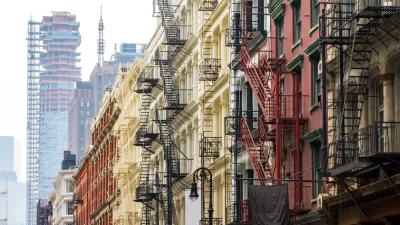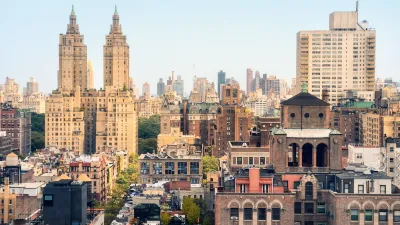Plans have been approved for the development of 5 World Trade Center, in place of a building damaged on September 11 and eventually torn down.

The final piece of the rebuilt World Trade Center is now in place.
The Port Authority of New York and New Jersey Board of Commissioners and the Lower Manhattan Development Corporation Board recently approved plans for the development of a 1.56-million-square-foot, 900-foot-tall tower designed by Kohn Pedersen Fox (KPF) and developed by Brookfield Properties and Silverstein Properties.
"The proposal for the future 1.56 million gross square foot mixed-use building currently anticipates approximately 1.2 million square feet of residential space or 1,325 residential rental units – of which 25%, or approximately 330, would be permanently affordable. The building would also include approximately 190,000 square feet of office space," according to a Port Authority press release. "[T]he building would have a 12,000 square foot community facility space, as well as 55,000 square feet of public amenity space and 7,000 square feet of retail."
In addition to being the final development to rebuild from the damage done on September 11, 2001, the new 5 World Trade Center will be the first residential project on the World Trade Center campus.
Two articles, one by Jonathan Hillburg and the other by Diane Pham, provide additional insight into process that yielded these plans for 5 World Trade Center. Hillburg also notes that the General Project Plan (GPP) for the World Trade Center complex originally had the development of 5 World Trade Center targeted for office development. "[M]odifying the GPP will take approval from the LMDC, Empire State Development Board of Directors, the Public Authorities Control Board, and the US Department of Housing and Urban Development,' state and national environmental approvals, and more," report Hillburg.
FULL STORY: KPF’s 5 World Trade Center tower officially approved

Planetizen Federal Action Tracker
A weekly monitor of how Trump’s orders and actions are impacting planners and planning in America.

Congressman Proposes Bill to Rename DC Metro “Trump Train”
The Make Autorail Great Again Act would withhold federal funding to the system until the Washington Metropolitan Area Transit Authority (WMATA), rebrands as the Washington Metropolitan Authority for Greater Access (WMAGA).

The Simple Legislative Tool Transforming Vacant Downtowns
In California, Michigan and Georgia, an easy win is bringing dollars — and delight — back to city centers.

Albuquerque’s Microtransit: A Planner’s Answer to Food Access Gaps
New microtransit vans in Albuquerque aim to close food access gaps by linking low-income areas to grocery stores, cutting travel times by 30 percent and offering planners a scalable model for equity-focused transit.

This City Will Pay You to Meet Your Neighbors
A North Kansas City grant program offers up to $400 for residents to throw neighborhood block parties.

Commentary: Our Silence Will Not Protect Us
Keeping our heads down and our language inoffensive is not the right response to the times we’re in. Solidarity and courage is.
Urban Design for Planners 1: Software Tools
This six-course series explores essential urban design concepts using open source software and equips planners with the tools they need to participate fully in the urban design process.
Planning for Universal Design
Learn the tools for implementing Universal Design in planning regulations.
Smith Gee Studio
City of Charlotte
City of Camden Redevelopment Agency
City of Astoria
Transportation Research & Education Center (TREC) at Portland State University
US High Speed Rail Association
City of Camden Redevelopment Agency
Municipality of Princeton (NJ)





























